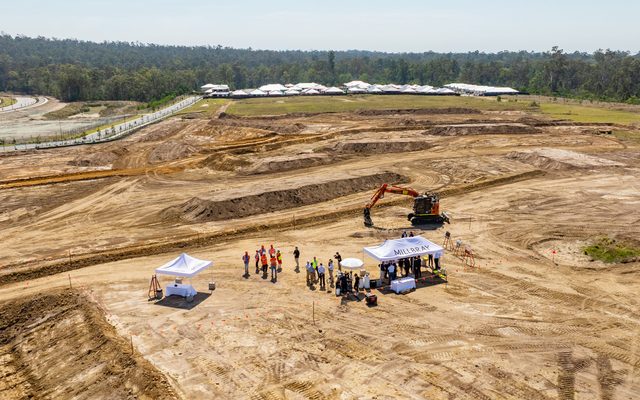This article is from the Australian Property Journal archive
SINGAPORE, Tokyo, Sydney and Melbourne and Ho Chi Minh City are the top cities on investors’ 2020 wish list, as they adopt a more cautious view of co-working, a fallout from WeWork’s failed IPO and reports emerge that co-working companies in China are having trouble servicing debt.
According to the latest Emerging Trends in Real Estate Asia Pacific 2020, a real estate forecast jointly published by the Urban Land Institute (ULI) and PwC, APAC continues to produce strong returns, but caution is increasingly embedded into investor strategies.
Singapore, Tokyo, Sydney and Melbourne are ranked as four of the top five markets for investment prospects, reflecting investor preference for regional markets that are large, liquid, and defensive.
Whereas, Ho Chi Minh City, is the only emerging market in the top five due to its strong economic growth as it absorbs Chinese manufacturing capacity moving offshore.
ULI Asia Pacific chairman Nicholas Brooke said the findings reflect the prevailing sentiment throughout the industry that real estate in general is entering a period of slower growth.
“The major markets that are ranked highest offer significant numbers of core assets that are the preferred targets of regional institutional investors. We can expect this emphasis on core properties to continue as the market cycle changes,” Brooke said.
PwC Asia Pacific real estate tax leader KK So said the report shows how investment interest in today’s uncertain global environment is moving towards more mature economies such as Singapore, Tokyo, Sydney and Melbourne.
“Investments from the west into in Asia Pacific have waned, but the Asia Pacific-based investors are increasingly investing in markets within the region, which presents a healthy pipeline of investment prospects for the region moving forward,” So added.
Singapore was ranked first in investment, second in development. The office sector has now largely absorbed excess supply and was one of the few markets in 2019 to see a surge in transactions, driven in part by cross-border capital.
Tokyo was ranked second in investment, fourth in development. The market continues to offer one of Asia’s most liquid markets and record low interest rates ensure borrowing costs remain the lowest in the Asia Pacific region and have created a good spread over the cost of debt despite the compressed cap rates.
Ho Chi Minh City came in third in investment and first in development. The city has emerged as winner in the Washington-Beijing trade war and is benefiting from growth of the manufacturing industry as companies look to avoid US tariffs.
Sydney was rated fourth in investment, third in development. The report found it continues to be a relatively liquid and mature market with numerous high-quality assets, a stable economy and higher cap rates than can be found elsewhere in the Asia Pacific.
Finally, Melbourne placed fifth for investment and development. With ongoing cap rate compression and the lowest office vacancies in Australia, it continues to be one of the first places institutional investors look to place capital. Favourable demographics and a diverse local economy mean that office rents should continue to trend upwards over the next five years.
Meanwhile the fallout from co-working giant WeWork’s failed IPO has already reverberated across the region with investors taking a more cautious view, forcing them to reconsider the risks relating to the structuring of the industry’s lease agreements.
The report said given the sheer volume of coworking space now on the market, these risks apply not only to coworking operators, but also to building owners and potentially also banks that have financed the purchases of buildings in which there are large concentrations of coworking facilities.
According to CBRE, the total office footprint of coworking operators in the Asia Pacific region has risen more than 300% since 2016, reaching some 54 million square feet as of March 2019. Coworking companies now occupies more than 3% of office supply in the Asia Pacific region, compared with 2% in the United States.
“Usually, operators obtain space from landlords on long-term leases (often including long rent-free periods, nonrecourse terms, and commitments from landlords to undertake costly fitouts) that is then sub-let to their own end users on a short-term basis. This mismatch means that operators at risk of losing tenants in the event of a downturn will still be bound by the terms of their own (longer) leases with building owners (who are in turn exposed if an operator goes out of business).
“In addition, the extent of the losses disclosed in the abortive IPO now raises further questions. In particular, is the industry’s business model sustainable over the long term?
“And, more important in the short term, will operators still be able to raise equity and debt in an environment where so few operators are currently profitable and competition is only increasing?,” the report asked.
One of the survey respondents, a Shanghai-based fund manager said: “Lots of smaller coworking companies in China are now having trouble servicing [debt]. There is definitely demand, but the dilemma for investors is the need to consider whether there will be a negative impact on exit in terms of pricing because the credit standing of the industry is deteriorating.”
The report said as a result, landlords are now changing the way they contract with coworking occupiers as they seek to reduce their risk.
“We are shying away from leasing out the whole building [to operators],” continued the fund manager. Instead, “we may give a third or a quarter of our space to them, and then try to include more covenants, requiring a big deposit or guarantee.
“Another way the flexible space dynamic is changing is through the emergence of landlord/operator partnerships, with operators looking to secure management contracts to create flexible workspaces, either within individual buildings or across an entire portfolio of assets. Coworking companies thereby gain access to a large client base of established corporate tenants while simultaneously slashing both rental overheads and the large capex commitments needed to set up new coworking centres. Landlords, meanwhile, can upgrade amenities for existing tenants and are spared from having to compete with the operators by creating standalone platforms.
“This type of relationship is becoming increasingly common in the United States. According to an executive of one US-based coworking operator who has negotiated numerous such deals, “The landlord is now our client, so we’re structuring these top-line revenue-share structures or profit-share structures where landlords put up the majority of capital, but get a premium to the market rent.
“For example, in New York our rent is $64 per square foot, but we’re rerenting that space for $380 per square foot. So, we say to the landlord, “You’re missing out on that opportunity—you could be making a 40% to 50% premium on a traditional rent.” Although so far this model is relatively rare in the Asia Pacific, landlord/operator partnerships can be expected to evolve quickly over the medium term,” the report said.




